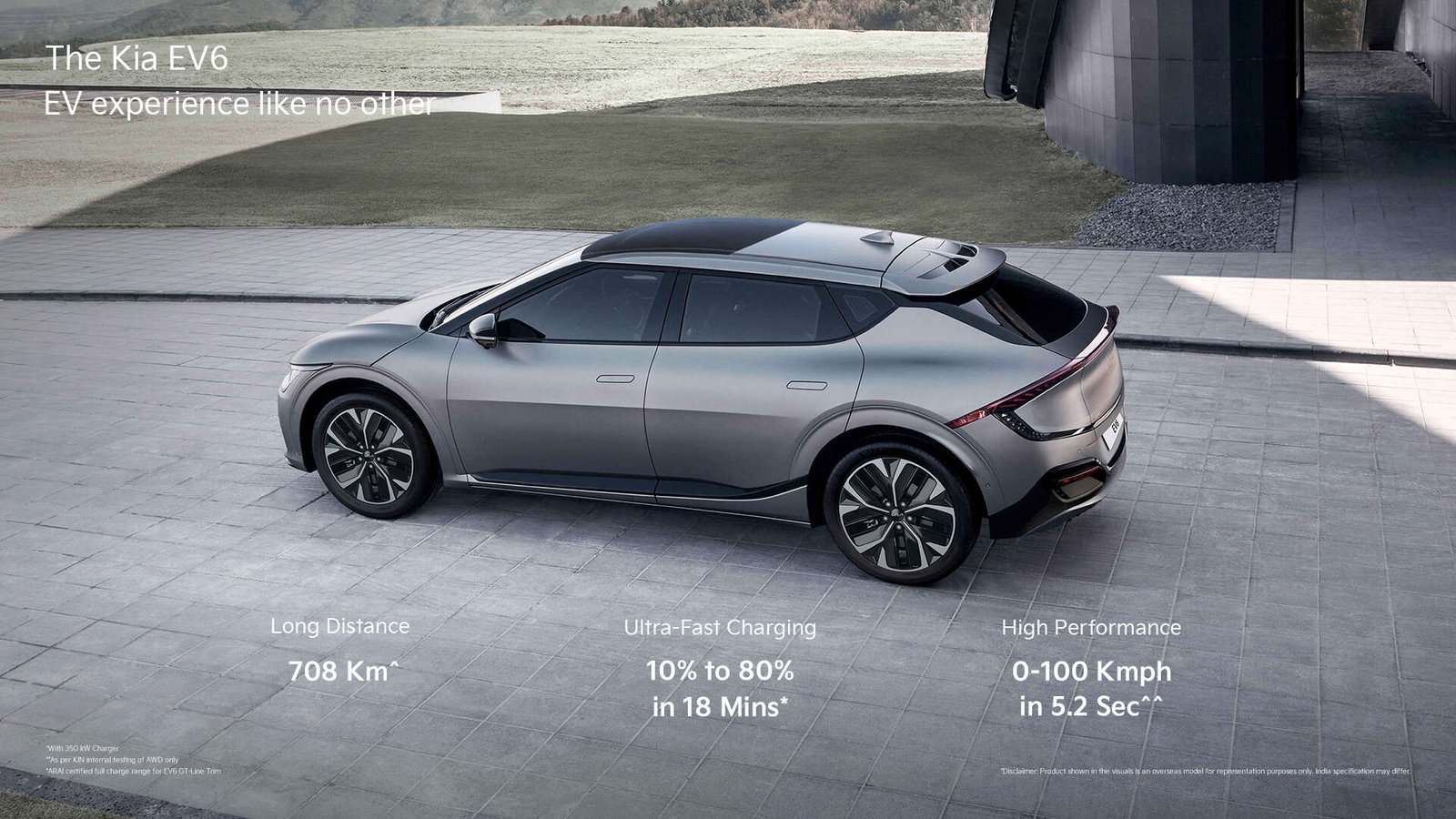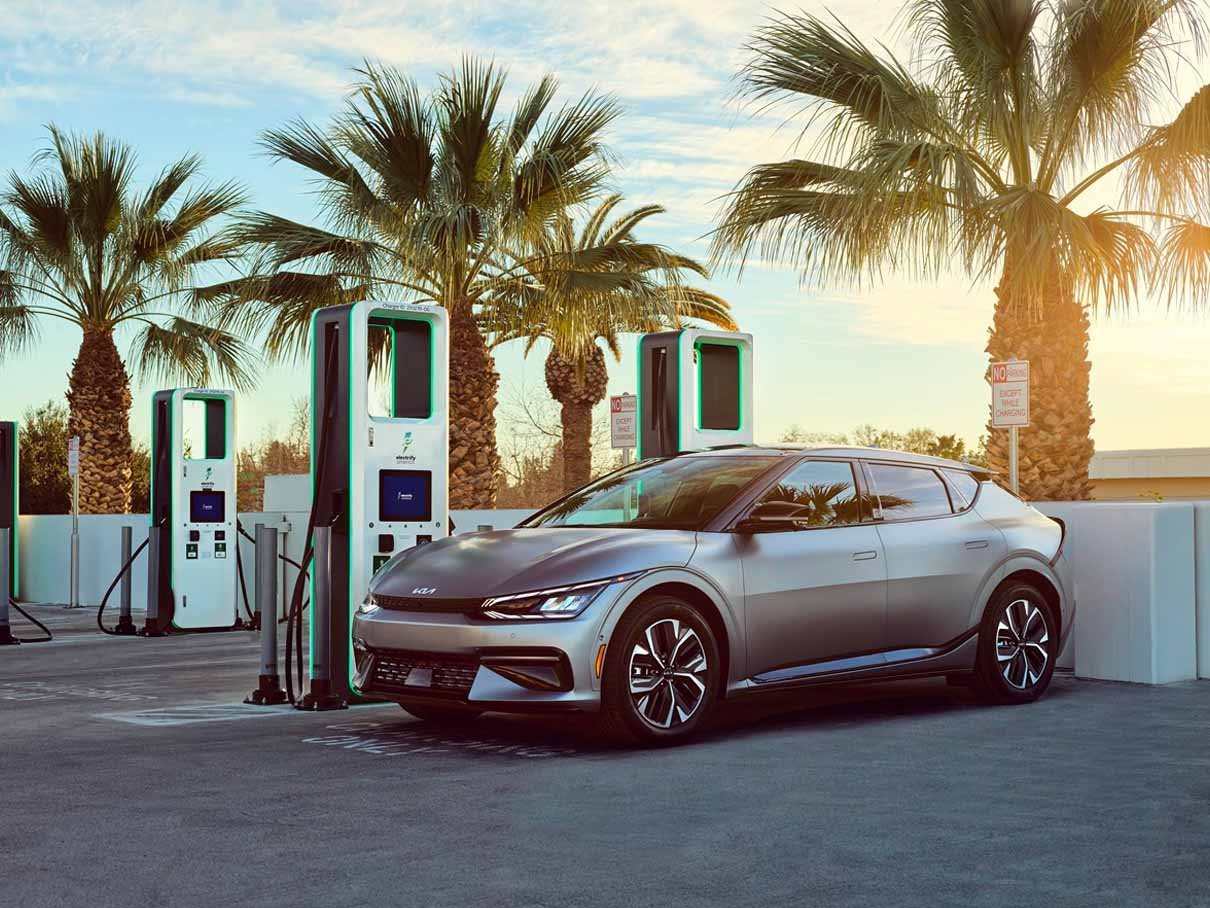Why I Chose an EV Instead of a Hybrid A Personal Data-Driven Choice: As India moves toward sustainable transportation, the discussion between hybrid vehicles and fully electric vehicles (EVs) is gaining momentum. While hybrids may provide a short-term solution, EVs are proving to be the long-term answer to the nation’s objective of reducing carbon emissions and minimizing reliance on fossil fuels. Having recently confronted this choice myself, I decided to go with a fully electric car—the Kia EV6. After years of driving internal combustion engine (ICE) vehicles and considering hybrids, I found that EVs offer a more compelling, efficient, and sustainable option, particularly in the context of India’s rapidly evolving automotive industry.

Why I Chose an EV Instead of a Hybrid A Personal Data-Driven Choice
EVs vs. Hybrids: Understanding the Differences
Hybrid vehicles are often seen as an intermediary between traditional gasoline-powered cars and the new age of electrification. They feature a combination of a gasoline engine and an electric motor, providing better fuel efficiency than ICE vehicles. However, hybrids still rely on fossil fuels and demand the same level of maintenance as a regular ICE vehicle, including oil changes, spark plugs, and exhaust system upkeep. In contrast, EVs completely remove the need for fuel and significantly lower maintenance costs thanks to their simpler design, which includes fewer moving parts and no need for conventional engine components like oil filters or exhaust systems.
While hybrids can reduce fuel consumption, they remain tied to gasoline, limiting their potential for long-term sustainability. EVs, on the other hand, are free from fossil fuel dependence and are supported by a rapidly growing charging infrastructure, making them the true vehicles of the future.
Cost Efficiency of EVs
When it comes to running costs, EVs have a clear advantage over hybrids. For instance, my Kia EV6 operates at a cost of around ₹0.80 to ₹1.25 per kilometer. In comparison, a high-performance ICE vehicle, such as the BMW 340i, costs approximately ₹12 per kilometer to run. Hybrids, though more fuel-efficient than ICE vehicles, still rely on gasoline and often have higher operating costs, especially during highway driving where the gasoline engine is more active.
While hybrids may use their electric motor more in city driving, on longer highway trips, their fuel consumption becomes comparable to that of a traditional ICE vehicle. This makes EVs, which can operate purely on electricity, a far more economical choice, both for city commutes and long-distance travel.
Competitive Pricing of EVs
One of the most significant shifts in the EV market is the narrowing price gap between electric vehicles and hybrids. Government incentives, such as the 5% Goods and Services Tax (GST) on EVs, compared to the higher taxes on ICE vehicles, have made EVs more competitively priced. For example, the Kia EV6 is now priced on par with premium ICE sedans but offers the added advantage of significantly lower running costs.

Another example is the BYD Seal, which delivers an impressive 528 PS for just ₹56 lakh. Achieving that kind of power with an ICE vehicle would cost four times as much. While hybrids offer better fuel economy than ICE cars, they cannot match the performance or long-term cost benefits of fully electric vehicles.
Reduced Maintenance and Ownership Costs of EVs
In addition to lower running costs, EVs have the advantage of reduced maintenance expenses. Since EVs do not require engine oil, spark plugs, or exhaust systems, and have fewer mechanical parts, they are more affordable to maintain than both ICE and hybrid vehicles. Hybrids, with their dual powertrain system (electric motor and gasoline engine), require maintenance for both systems, which can lead to higher long-term costs.
This added complexity in hybrids makes them less attractive when considering the total cost of ownership over several years. EVs, being simpler in design, require far less maintenance, which translates into cost savings and greater convenience for the owner.
Charging Infrastructure and the Decline of Range Anxiety
A few years ago, concerns about the availability of charging infrastructure and range anxiety were significant barriers to EV adoption. However, advancements in battery technology and the rapid expansion of charging networks have made these concerns largely irrelevant. For instance, during a recent 500-kilometer trip from Gurgaon to Lucknow, my EV6 easily handled the journey, as modern EVs offer ranges between 400-500 kilometers on a single charge.
Additionally, with charging stations available every 30-40 kilometers along major highways, long-distance travel in an EV is now a smooth and worry-free experience. The widespread expansion of charging infrastructure across India, supported by both government and private investments, has effectively addressed the issue of range anxiety for most EV owners. While hybrids offer the backup of a gasoline engine for extended trips, India’s robust charging network makes EVs a more practical choice for daily use and long-distance travel.
India’s Transition to EVs
Another reason for my decision to choose an EV over a hybrid is the significant push toward electrification in India. Leading automakers, such as Maruti Suzuki, Tata, Mahindra, Kia, and Hyundai, are all introducing new EV models in the near future, increasing competition and consumer confidence in the EV market. For example, Maruti plans to launch three new EV models, Tata will add two more, and Mahindra has five electric SUVs on the horizon.
This growing competition is driving down the prices of EVs while simultaneously advancing technology and infrastructure. The Indian government’s focus on renewable energy, particularly solar power in states like Rajasthan, further strengthens the case for EVs. As more of the country’s electricity grid is powered by clean energy, EVs will become even more environmentally friendly, making them the best long-term solution for sustainable transportation.
Environmental Sustainability: EVs Lead the Way
While hybrids emit fewer pollutants than ICE vehicles, they are still dependent on fossil fuels and cannot match the zero tailpipe emissions of fully electric vehicles. As India strives to reduce its carbon footprint and increase its reliance on renewable energy sources, EVs are emerging as a clear winner in the fight against climate change. The overall emissions from EVs are already 40% lower than those of ICE vehicles, and this reduction will improve as the country’s renewable energy capacity continues to expand.
With India’s growing investment in solar and wind energy, combined with the rapid development of solar farms, EVs will not only become more cost-efficient but also environmentally cleaner. Hybrids, while representing a step in the right direction, cannot offer the same environmental benefits as fully electric vehicles, making them a less sustainable option in the long term.
The Road Ahead: EVs Outpacing Hybrids
In conclusion, while hybrids provide a short-term solution during the transition away from fossil fuels, fully electric vehicles are the ultimate path forward for achieving sustainable mobility. EVs are not only more affordable to operate, but they are also easier to maintain and have a significantly smaller environmental footprint. With ongoing advancements in battery technology, the rapid growth of charging infrastructure, and the government’s commitment to renewable energy, the case for EVs has never been stronger.
For me, the decision to choose an EV over a hybrid was simple. After years of driving traditional vehicles, I discovered that my new EV offers superior performance, greater savings, and unparalleled environmental benefits. As India continues to electrify its transportation sector, the future of mobility is undoubtedly electric—and now is the best time to embrace this shift.